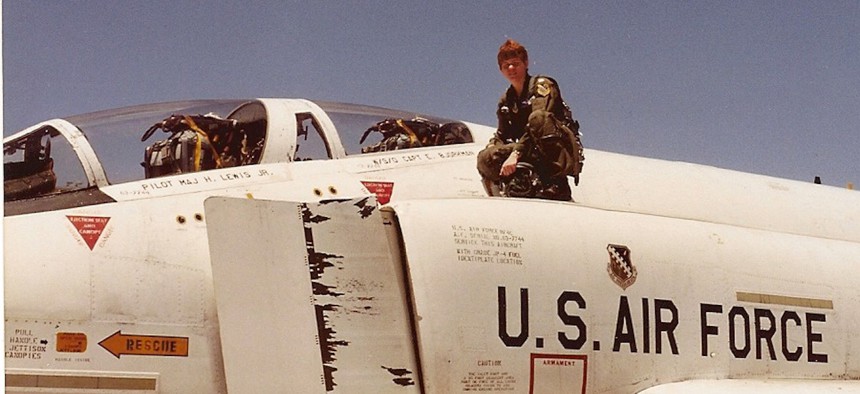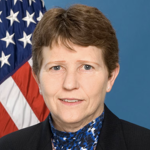We’re Still Arguing Over Women in the Military?
The U.S. armed forces need women, and suggestions to the contrary hurt recruiting and readiness.
Women in the military, especially aviators, have a lot to celebrate this year. It’s the 75th anniversary of the Women’s Armed Services Integration Act, which established a permanent presence for women in the U.S. military. It’s been three decades since female pilots, long limited to flying support aircraft, began training for combat roles. The Navy marked a half-century of female naval aviators with an all-woman flyover at the Super Bowl.
Women may now serve in all military career fields, both support and combat specialties, and they make up about 17.4 percent of the active-duty force, up seven-fold from 1973.
But even with opportunities for women in the military at an all-time high, I’m disheartened by the way some civilians, especially those who have never served, treat military women. For example, in March 2021, when the services debuted body armor sized for women and maternity flight suits to help women fly longer during pregnancy, Tucker Carlson mocked the new equipment that allowed women to do their jobs. Within hours, Carlson’s rant filled my Twitter feed, along with misogynistic comments—almost all of them from civilian men. More recently, Maj. Gen. Patrick Donahue ignited a Twitter feud that delayed his planned retirement from the army after he defended women in the military. These battles send a revolting message to young women who might be thinking about the military: You’re a joke.
This attitude towards women is compounded by a larger movement that would have us believe military classes in diversity, equity, and inclusion, or DEI, are driving away recruits. It’s true that the Army missed their 2022 recruiting goal of 60,000 by 15,000, but DEI isn’t to blame. Military recruiting often drops during times of high employment, such as that currently in the U.S. Another current factor cited by the Army is a narrowing of benefits between the military and the private sector, along with outreach difficulties created by the pandemic.
Assigning blame to DEI is ludicrous. The Army’s senior enlisted leader, Sgt. Maj. Michael Grinston, pointed out in recent Congressional testimony that recruits receive 92 hours of rifle marksmanship training in boot camp, but only one hour of equal-opportunity training. During the same testimony, Chief Master Sergeant of the Air Force Joanne S. Bass pushed back on assertions that the military has “gone woke,” dismissing a suggestion that the Air Force conducts “pronoun training.”
If anything, the anti-DEI movement may be creating problems for the military by further reducing the propensity of women to serve. According to a 2017 Joint Advertising Market Research and Studies survey, women are already only about half as confident as men that they can be successful in a military career. JAMRS also reports that young people rely heavily on their perceptions about the military in forming their propensity to serve.
From my own experience, I understand the impact of negative reporting on women. After joining the Air Force in 1980, for the next decade I read about a continuous stream of studies commissioned that seemed determined to prove that the presence of women undermined readiness, with the goal to reduce the number of women in the military. In essence, the studies were attacks that caused me, from time to time, to question my own commitment to the military.
As the number of qualified people with a propensity to serve continues to dwindle, the military needs women, who make up half the candidate pool. Reducing the size of that pool because women don’t feel welcome will hurt military readiness.
For proof that women don’t hurt readiness but instead contribute to a military that wins wars, look at the current fight in Europe. The Ukrainian military, made up of 22 percent women, 5,000 of whom serve on the front lines, are pounding the Russia military, made up of 96 percent men. It’s not manliness that matters; it’s readiness.
The Defense Department recognizes that women are part of the team, and I applaud the unequivocal signal of support sent by recent efforts to remove barriers to service, such as the maternity flight suits and increased maternity (and paternity) leave. I hope that celebrating the trifecta of milestones for women in the military this year helps achieve that same level of acceptance and support from all Americans.
The opinions in this article are the author’s alone and do not necessarily reflect those of the Air Force Test Center, the Air Force, or the U.S. government.
Eileen Bjorkman is the executive director of the Air Force Test Center. A retired U.S. Air Force colonel, she has more than 700 hours as a Flight Test Engineer in more than 25 different aircraft, primarily the F-4 Phantom II, F-16 Fighting Falcon, C-130 Hercules, and C-141 Starlifter. She is also the author of The Fly Girls Revolt: The Story of the Women Who Kicked Open the Door to Fly in Combat, to be published in May by Knox Press.




